
Uncovering Antarctica secrets through international drilling initiative
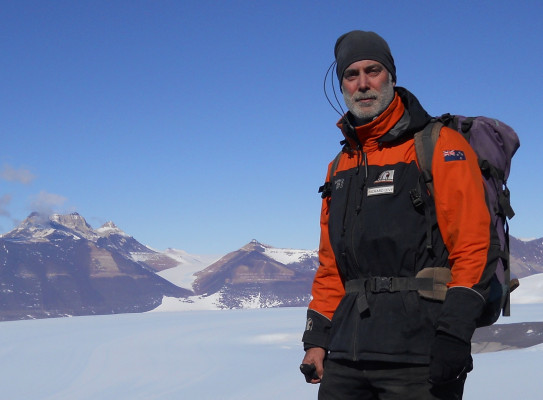
A ground-breaking Antarctic drilling system has been designed and constructed in Porirua.
The new drill is being designed to uncover environmental secrets hidden beneath Antarctica’s vast Ross Ice Shelf, with the ultimate goal of helping us understand the impact of a changing climate on melting Antarctica’s ice sheets, rising seas level, and ultimately consequences for coastal communities around the world.
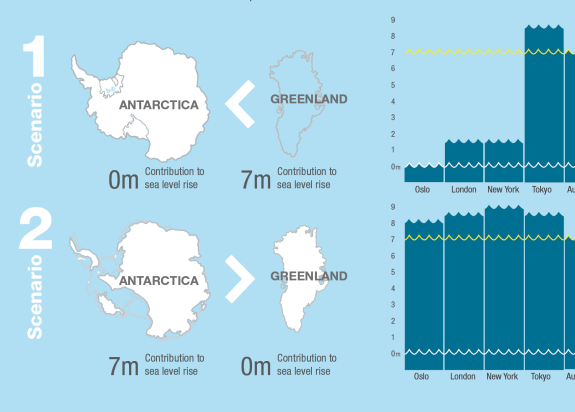
Project co-chief Scientist, GNS Science’s Dr Richard Levy says the drill will allow us to recover sediment cores from deep beneath the seafloor, far below the surface of the Ross Ice Shelf near a place where the West Antarctic Ice Sheet begins to float.
“This is something that nobody has yet been able to achieve. Sediment cores are crucial for climate studies as they allow us to glimpse into past periods when climate was warmer than today and like that we expect in the coming decades. Every core we collect will contain layers of data that allow us to look back hundreds, thousands, and millions of years into Earth’s past. Through our frontier geoscience and cutting-edge technology, we can uncover a treasure trove of information. New data we glean from the cores will give us unique insight into past environmental change in Antarctica.

One of the main aims is to reveal the sensitivity of the Ross Ice Shelf and West Antarctic Ice Sheet to past warming to help us model the future impact of climate change on the ice sheet and determine how much sea level will rise as the ice melts.
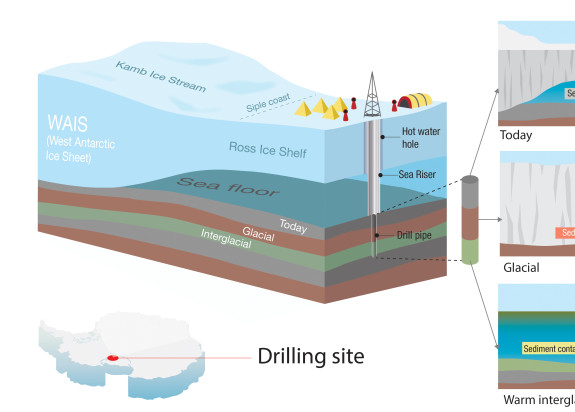
The project
The ambitious project is called ‘Sensitivity of the West Antarctic Ice Sheet to 2°C warming (SWAIS 2C)(external link), an international initiative involving researchers from New Zealand, the United States, the United Kingdom, Australia, Italy, Germany, Spain, the Netherlands, Japan, and Korea. The project is supported by the International Continental Drilling Program, Antarctic Science Platform and Antarctica New Zealand.
SWAIS 2C Project Manager Daleen Koch from GNS Science is quick to highlight the pressure felt by the team. “Our International research community have invested significant effort and funding in the project and are relying on Victoria University of Wellington and GNS Science to deliver the drilling system.”
Dr Molly Patterson, the SWAIS 2C project’s US-based Co-Chief Scientist from Binghamton University in New York says that future change in Antarctica will have far-reaching impact on societies across our planet.
“At the current rate of CO2 emissions, global mean temperatures will be 1.5°C and 2°C above pre-industrial levels in 10 to 20 years. This amount of warming could result in several metres of sea level rise over the coming centuries."
One of the key drivers for the SWAIS 2C project is to test whether the West Antarctic Ice sheet collapsed during past intervals of warmth and determine its sensitivity to warming. In other words, we well attempt to answer the question, ‘Does the Paris climate target save the Ross Ice Shelf and limit Antarctic ice sheet melt’?
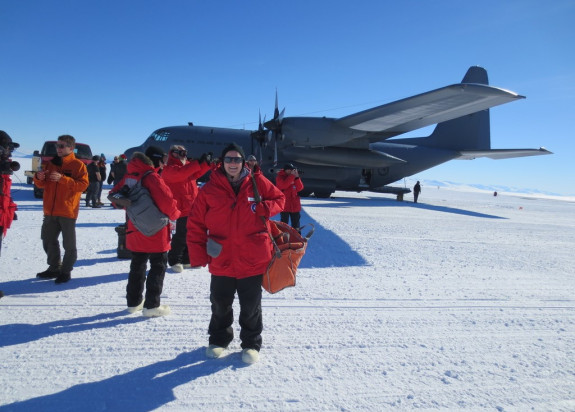
Delivering the drill
But, getting these data is no walk in the park. There’s a 700 metre-thick slab of floating ice lying between us and the key environmental information we need to recover and study.
Dr Levy says the Ross Ice Shelf currently acts as a buttress. “Slowing the flow of the West Antarctic Ice Sheet into the ocean and limiting sea level rise,” Levy says. “If the ice shelf collapses the ice sheet will follow and the rate and amount of sea level rise will rapidly increase. We are obviously grateful the ice shelf is there and we certainly hope it remains, but it means we have to come up with innovative ways to access the hard-to-reach records.”
If the ice shelf collapses the ice sheet will follow and the rate and amount of sea level rise will rapidly increase. We are obviously grateful the ice shelf is there and we certainly hope it remains, but it means we have to come up with innovative ways to access the hard-to-reach records.
The somewhat daunting task to design and build the bespoke system falls on Engineering Manager Darcy Mandeno and Antarctic Drilling Adviser Alex Pyne from Victoria University of Wellington’s Antarctic Research Centre and staff at Webster Drilling and Exploration (WD&E) in Porirua City.
Mandeno says no one has ever drilled deep into the Antarctic seabed at a location so far from a major base, and so close to the centre of the West Antarctic Ice Sheet. “The thin layer of ocean beneath the ice shelf at the study site has been accessed a few times, but a deep sediment core has never been recovered."
Nobody has cracked that one yet. We are trying to get beneath the ice shelf to access the seabed and give ourselves enough of a window to extract those sediment cores before the hole in the ice freezes up.
The team will first use a hot water drilling system to melt a hole through the Ross Ice Shelf. This key piece of equipment has already been built and successfully used on the ice. They will then install the new sediment drilling system, known as the Antarctic Intermediate Depth Drill (AIDD) and retrieve the sediment crucial to the research by coring down into the rock layers below the sea floor.
“You can’t just buy a drill like this off the shelf, it’s custom-built for the challenge,” Mandeno says. “We are bringing together lots of different parts and pieces and adapting them to address our problem, which comes with a lot of unique challenges and workarounds. Adam Rutten our head drilling mechanic from WD&E sent me a text at 2am one morning with the solution to a hydraulic issue we were having and we had it sorted by the following morning. Having Adam and the Webster Drilling team on this project, with their extensive experience with drilling is so important, they just spot the stuff that could trip us up down the track when we are working in Antarctica, far away from a workshop.”
Darcy says every detail is thought through and workshopped as a team.
“The team have to explore every detail. Take power for example, one small but critical aspect of the system. The batteries need casings to make them waterproof. The fuels we use are designed for the extreme cold and can really mess with engines, so we have to use engines that are more widely used in agriculture than drilling as they run more reliably. On top of that we have to carefully consider which spare parts we need to take, what we can, or absolutely cannot, do without, because it’s not like you can pop down to the shop to get the part you need. Also, when set up and operating everything must fit into a tent that is only 15 metres long and 8 metres wide. On top of all that, we must first fit everything into a shipping container and send it to Christchurch by December this year from where it will be shipped to Antarctica ready to be used the following field season.”
Webster Drilling is a commercial business with over 35 years of experience working in remote locations around the world. Darcy says that the strong relationship between research institutions and a commercial operation is invaluable. “Without Websters, building this type of drill system would be out of reach of our research community.”
“We have been working on the new drill rig on and off again since 2019. It’s really exciting to get the opportunity to try new things, push the boundaries. The Webster Drilling team have extensive experience in drilling, which is invaluable to our research project. But its more than technical expertise they offer, they let us use their workshop space and their tools and they aren’t exactly making money on this, but they are contributing to important environmental research.”
1200km over-ice traverse
The engineers and drillers are not only building the drilling system, but will be donning the iconic Antarctica New Zealand orange jackets for the trip to the ice in 2023 to operate the drill and fix any problems as they arise.
The journey there is an epic adventure in and of itself. The first drill site requires an approximately 1200km over-ice traverse, from Scott Base, and is located near the terminus of the Kamb Ice Stream – a near stagnant glacial ‘river’ that flows from near the centre of the West Antarctic Ice Sheet. Getting there will involve an arduous journey via Pisten Bully tractor-train traverse across the Ross Ice Shelf.
A route across the Ross Ice Shelf has already been mapped and followed several times by a team from Antarctica New Zealand. Last year, a traverse team pushed into new territory to prove a route to a second drill site, at Crary’s Ice Rise – a journey made possible through a collaboration with the German Aerospace Centre (DLR). Their satellite, TerraSAR-X, takes an ‘x-ray’ of the ice shelf and exposes crevasses hidden beneath the snow, allowing the team to safely navigate equipment and supplies across treacherous terrain.
However, most of the research team of drillers, engineers and scientists will fly to the site in ski-equipped planes. Once they arrive and setup the drillers will begin their work while the scientists watch and hope that years of preparation will pay off.
“Getting through the ice is the easy part, well relatively easy if all goes well,” Darcy says. “It’s 700 metres down through the ice with the hot water system and when we are done we will have melted a hole around 350mm wide. Once the hot water system has done its work, then we are racing the clock. We need to get the sediment drill in position fast to get those cores as quick as we can as the ice hole will immediately start to close, shrinking at a rate of 5-10mm per hour. We will switch from working day shifts to a 24/7 operation. If the hole freezes over, the drill will get stuck and game over.
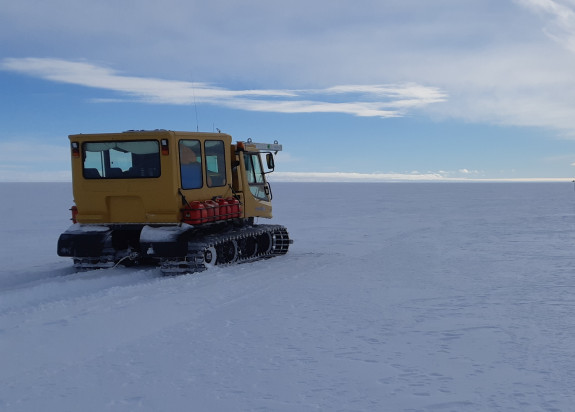
Darcy says the sediment drilling is an art especially within the cold remote Antarctic environment.
Several short cores, less than a metre long, were recovered near the site using simple gravity-driven coring systems during previous site survey expeditions. But the target layers for the SWAIS 2C Project lie at least 150 m below the sea floor. “Basically, if we drill past half a metre below the sea floor at the site we are in discovery mode,” Mandeno says.
“Because nobody has been able to drill as deep as we aim to go, there are going to be a lot of surprises as we core deeper. That’s the beauty of the location and this project. It’s uncharted territory down there beneath the ice, beneath the seafloor, so close to the place where the ice sheet begins to float, nobody really knows what we will find. So, if the technology works and we can get those cores, then we open up a massive opportunity to make discoveries that will impact the way we plan for our future.
Once the cores are retrieved from beneath the seafloor and brought up to the ice shelf surface, the science team will work fast to X-ray the cores, complete some initial analyses, and ensure the cores are safely stored and kept in pristine condition for detailed study once they have been shipped to New Zealand and laboratories around the world.
If things go to plan at the first site, the drilling system will be moved by tractor-train along a route through treacherous crevassed terrain to Crary Ice Rise, the second site of the SWAIS 2C Project that will be drilled in 2024. The drilling system will then be available to use at other sites in Antarctica – but this all depends on societal needs, research priorities, and funding. “We are building a system for the research community” says Mandeno. “If we can crack the first site, and everything goes to plan, we can tackle the second site. And, you know how it is with scientists, more sediment, more data, more knowledge. I suspect this system will be used over and over again as we push forward to make new discoveries”
Several of Webster’s staff have been involved in Antarctic drilling projects dating back to the 1980’s. There is also a large amount of Antarctic experience in the current team. For Darcy it will be trip number eleven to ‘The Ice’ and five for Adam. But it’s the first for James the newest member of the team.
“Sometimes I forget where I am going and just think it’s another trip, and then it hits me, this is my day job” says Darcy. “This job really is pretty amazing, and when you get to lead a team to Antarctica and take people there for their first time, especially students who are just setting out on their career of discovery, that’s when you remember how lucky you are”.
Drilling into the science
Once the cores have been recovered, they will be flown back to New Zealand’s Antarctic hub at Scott Base and shipped to the Otago Repository for Core Analysis (ORCA) at Otago University in Dunedin, New Zealand. The cores will ultimately be stored at Oregon State in the United States where they will be available to the global research community for ongoing research.
Dr Levy says data from the cores will be used to reconstruct past ocean temperatures and sea-ice extent, and determine ice-shelf and ice sheet response to prehistoric climate variability and periods of past warmer-than-present conditions including during intervals of elevated atmospheric CO2 and temperature. These observations of past environmental conditions will be used by the teams numerical modellers who use computers to conduct experiments that help examine and understand interactions between the Earth’s crust, oceans, atmosphere, and ice and how these interactions evolve as the climate cools and warms.
Every metre of sediment we acquire is going to allow numerous studies and we are currently sorting through the various projects that our scientists are proposing and to ensure the right people get the right samples.
“Then it’s up to our modellers who use equations and algorithms to run experiments to explore processes that might explain the changes we observe in the cores. These ‘paleo-validated’ models then help us see the future, they allow us to project the global consequences of change in Antarctica.”
The field team will also deploy oceanographic instruments beneath the ice shelf through the access hole made by the hot water drill.
Dr Levy says the global community depends on Antarctic scientists to generate new insight into ice sheet response to this level of warming and to integrate this knowledge with colleagues working on other components of the Earth system.
“Getting this kind of project off the ground takes the blood, sweat and tears of a lot of people from around the world. Our proposed approach to this drilling is novel and risky, but it’s the only way we are going to get those critical samples. If we can pull this off and prove the concept, it will open up new opportunities to obtain key records of environmental change and ice sheet dynamics at other remote locations across Antarctica. This comprehensive sampling approach will allow us to build a much better picture of how Antarctic ice will respond to warming, which parts will melt first, and which parts will remain. This knowledge is critical as humanity grapples with the challenge of sea level rise. We know we must adapt to at least 30 cm of sea level rise over the coming decades, but we must also plan for a range of possible futures with the potential for significantly higher values. SWAIS 2C researchers and the drilling machines that Darcy, Alex, Adam and the team at Websters are building will help us ‘see’ those possible futures.”
SWAIS 2C project operations are supported through funds from New Zealand, the United States, Germany, the United Kingdom, Australia, Japan, and the Republic of Korea. Support is also provided by the International Continental Scientific Drilling Programme (ICDP). This project is the first in Antarctica for ICDP. New Zealand participation is supported through the Antarctic Science Platform’s Ice Dynamics Project.
Antarctic field operations are scheduled to begin in November 2023 and will continue through 2024 with scientific studies continuing through to 2027.
